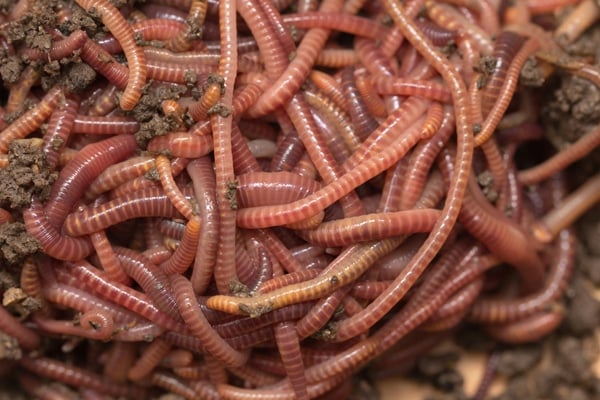Stock Up on Supplies with Lake Hickory Bait for Your Next Trip
Stock Up on Supplies with Lake Hickory Bait for Your Next Trip
Blog Article
Red Wigglers: The Unsung Heroes of Organic Waste Recycling
Red wigglers, or Eisenia fetida, function as vital representatives in the natural waste reusing procedure, changing disposed of materials into valuable vermicompost. Their efficient malfunction of raw material not just improves dirt high quality however additionally adds to lasting waste management methods. As the world progressively looks for options to deal with waste accumulation and improve farming efficiency, recognizing the duty of these worms becomes crucial. What systems enable them to thrive in garden compost environments, and just how can they be properly used in both domestic and business setups? Checking out these inquiries reveals the wider effects of vermicomposting in our ecological landscape.
What Are Red Wigglers?
The exceptional strength of red wigglers, clinically recognized as Eisenia fetida, highlights their crucial role in natural waste recycling. These little, reddish-brown earthworms are typically located in decaying natural matter, such as compost heap and manure lots. Lake Hickory Bait. Unlike various other earthworm species, red wigglers flourish in nutrient-rich atmospheres and are extremely reliable at damaging down organic products, making them important for vermicomposting

(Red Wiggler Express)In enhancement to their role in waste decrease, red wigglers add to soil health by boosting dirt framework and oygenation through their delving activities (Lake Hickory Bait). Their existence in composting systems not just boosts decomposition rates but likewise promotes a sustainable method to throw away monitoring, highlighting their relevance in environmental conservation initiatives
Advantages of Composting With Worms
Composting with worms, especially red wigglers, provides numerous advantages that enhance both waste administration and soil health. First, these worms effectively damage down natural waste, transforming it right into nutrient-rich vermicompost that enriches dirt. This process speeds up disintegration, enabling for a quicker recycling of cooking area scraps and other natural materials contrasted to traditional composting techniques.
Additionally, the vermicompost created by red wigglers is including beneficial microorganisms, which help boost dirt structure, oygenation, and moisture retention. This improves the total health of plants, advertising vigorous development and raised yields in gardens and agricultural settings. The use of worms in composting decreases the manufacturing of greenhouse gases, such as methane, contributing to a much more sustainable waste monitoring system.

Exactly How to Begin Vermicomposting
Developing a vermicomposting system is an uncomplicated procedure that can produce significant benefits for both waste administration and dirt enrichment. To begin, select an ideal container, such as a plastic container or wood box, with appropriate ventilation openings to make certain appropriate air flow. The dimensions need to preferably be about 2 feet by 3 feet, allowing sufficient room for the worms to flourish.
Next, prepare bedding material, which can consist of shredded newspaper, cardboard, or coconut coir. This bedding must be moistened to produce an appropriate habitat for the worms. Once the bedding is in Red Wiggler Express place, introduce red wigglers (Eisenia fetida) right into the bin, usually around one extra pound of worms for each square foot of surface area.
Complying with the placement of worms, add organic waste, such as fruit and vegetable scraps, coffee premises, and smashed eggshells. With these actions, you will effectively launch a vermicomposting system that adds to sustainable waste management and enhances your dirt.
Keeping a Healthy Worm Bin
(Red Wiggler Express)Maintaining a worm bin thriving needs regular attention and like guarantee the health of the red wigglers and the performance of the composting process. Proper maintenance starts with monitoring the moisture levels; the container must perspire however not saturated. A great guideline is to preserve an uniformity similar to a wrung-out sponge.
Gently blending the bedding and food scraps every couple of weeks avoids compaction and ensures that all worms have access to oxygen. Furthermore, it is vital to feed the worms suitably.
If the bin ends up being also warm or chilly, the worms might come to be worried. By diligently handling these factors, one can keep a durable and efficient worm bin.
Influence On Lasting Living
The effective upkeep of a worm bin not only profits the wellness of red wigglers however also adds substantially to sustainable living methods. By recycling natural waste, such as cooking area scraps and yard particles, red wigglers assist draw away significant amounts of product from landfills. This decrease in waste not only lowers greenhouse gas emissions yet likewise lessens the environmental burden related to waste monitoring.
Moreover, the castings generated by red wigglers offer as a nutrient-rich natural plant food, enhancing soil health and wellness and advertising plant development. This all-natural choice to chemical fertilizers sustains sustainable agriculture and horticulture methods, lowering dependence on synthetic inputs that can harm ecological communities. Furthermore, worm composting promotes recognition of waste management, encouraging people and areas to adopt even more lasting practices.

Verdict
In recap, red wigglers serve as important contributors to organic waste recycling through their reliable decay of organic products. By incorporating vermicomposting right into waste management approaches, people and communities can substantially lower waste while promoting environmental sustainability.
Report this page